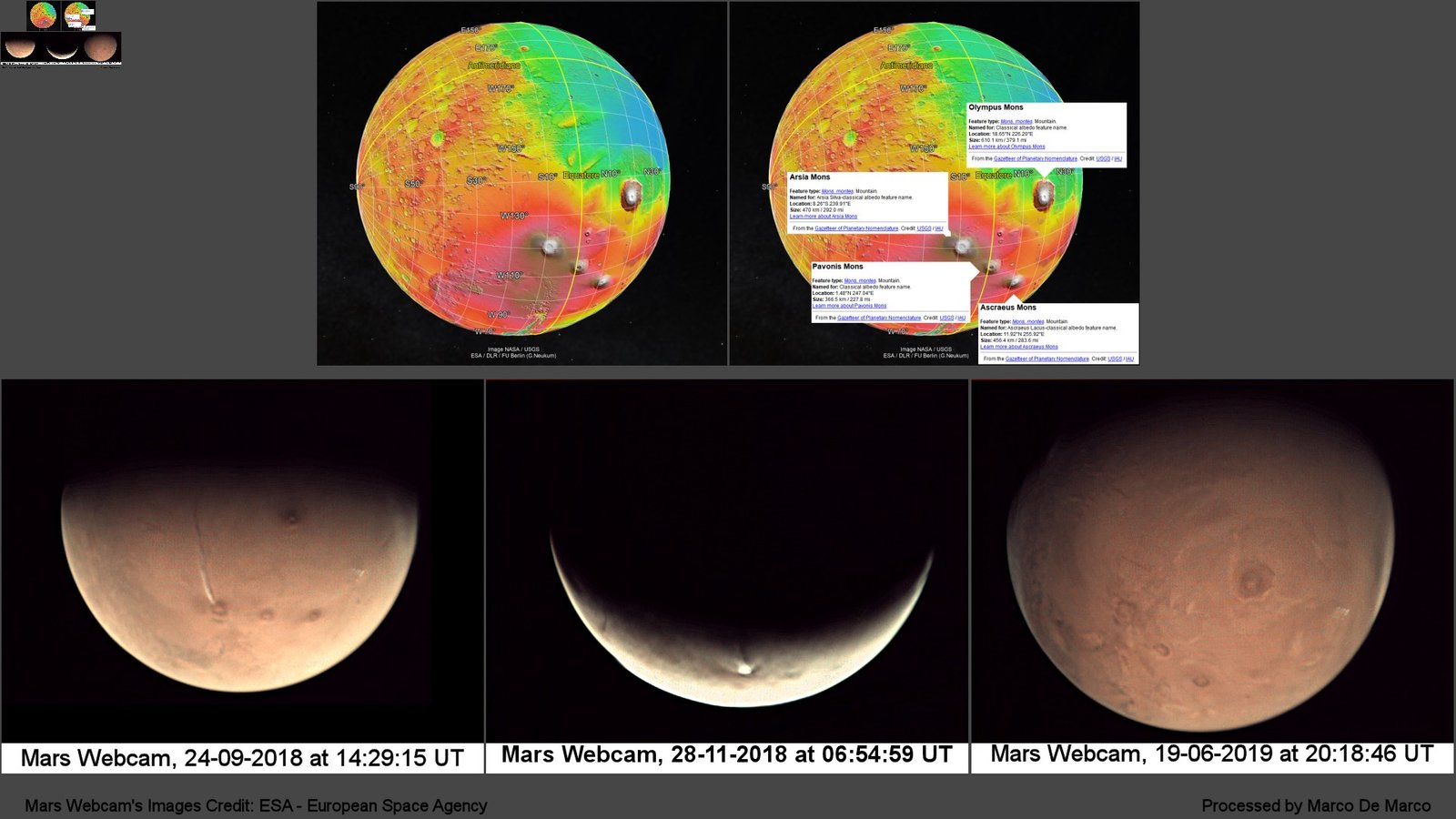
At 20:18:46 UT, the Mars Webcam takes the fourth in a series of 33 photos depicting the Tharsis region, almost seven months after the last photo of the same area.
The aforementioned area has been the subject of heated discussion due to the famous “plume” that appeared in mid-September 2018 originating from the Arsia Mons volcano (see MOLA images, above, where the reliefs are color-coded in false colors), which lasted at least more than two months as shown by the last image of the Tharsis region taken on November 28, 2018 (middle photo among the three photos below).
In this recent image (the third on the right among the three bottom photos) we notice much more surface detail than in the September 24 image (the first on the left of the three bottom photos), a clear sign of a greater clarity of the Martian atmosphere and therefore an almost total absence of suspended dust.
This last fact would seem to contradict the recent theory proposed to explain the last shots of Curiosity of conspicuous cloud formations observed after sunset. According to the above theory, it would be a very fine dust of meteoric origin to trigger the formation of ice clouds in the upper atmosphere.
I have avoided to publish the above article for “decency”, since the formation of clouds and mists is absolutely normal in the hours between sunset and sunrise, as evidenced by ALL the photos of the Martian terminator taken by the Mars Webcam that always appears totally devoid of surface details.
On the contrary, in any photo of the Moon in phase, the terminator represents the area of maximum surface contrast because of the long shadows cast by even the smallest surface roughness.
I conclude by noting with great regret that we have missed the extinction phase of the plume of Arsia Mons; a great missed opportunity!
Original image from the Mars Webcam of 19-06-2019: https://www.flickr.com/photos/esa_marswebcam/48096634607/
This post has been automatically translated. See the original post here.